South African UAB and CD family "Raptor" for the operators "Mirage" and "Gripenov": Argentina "in transit"
What products of the South African military-industrial complex, we are most heard? Naturally, this: 155-mm mobile self-propelled artillery G6 "Rhino" (Rhino), located on the six-wheeled chassis of high permeability and capable of 1,3 times faster to push forward to the firing line, rather than PzH-2000 or M-109AXNUM X MUMNXXXXXXXXXXXXXXXXXXXMXXXXMXXXXXXXXXXXXXXXXXXXXXXXXXXG 7-channel shipboard anti-aircraft missile complex “Umkhonto”, characterized by the presence of two types of missiles with active radar and infrared seeker, as well as deflected thrust vector; V8E “A-Darter” melee airborne missile, also equipped with an OBE, which makes it possible to maneuver with an impressive overload in 3G. But these are only the samples of high-tech weapons that have received maximum fame in the West, and then were placed in the translation sections of such Russian-language information resources as “Military Parity”, as well as in various encyclopedias. There are also such developments in South Africa, which “leaked” to the Russian Internet only in single publications, or in general remained only on the pages of foreign analytical resources. These include such high-precision prototypes. weaponsas the Raptor-1 / 2 guided bombs, and the Raptor-3 tactical long-range cruise missile.
The first information about the Raptor-1 planning bomb project appeared at the end of 70-x and the beginning of 80-x, when before the South African company Kentron (now Denel Dynamics), which is the regional leader in the field of advanced missile weapons, The task is to create a promising model of precision weapons. Raptor-1 owes its appearance to the international embargo on the sale to South Africa of modern military equipment, which was imposed on the state in 1977, due to participation in the civil war in Angola and the pursuit of racial segregation (apartheid) towards the indigenous black population.
To maintain the republic’s defense capability and the possibility of further participation in the confrontation, Cape Town was forced to fully rely on military-technical cooperation with Israel. The fruits of this collaboration were such projects as the Cheetah multipurpose tactical fighter (an analogue of the Israeli modernization Mirage-IIIDZ / D2Z, which received the Kfir TC-2 index), designed thanks to the participation of Israel Aircraft Industries experts and unique in its Kind of 450-kilogram anti-radar missile-bombed guided munition BARB, developed by «Grinaker Aviatronics» on the basis of Israeli guided bombs of «Whizzard» family. If it is extremely difficult to get any information about the use of the BARB (“Boosted Anti-Radar Bomb”) bomb, the veil of secrecy over the combat use of the planning UAB Raptor-1 is sufficiently ajar to draw definite conclusions.
According to its purpose and flight profile, the Raptor-1 has a similarity to the more modern American tactical medium-range and long-range AGM-154 JSOW American tactical aircraft, differing from the latter by the absence of a guidance channel using NAVSTAR / GPS satellite radio systems. "Raptor-1" has a combined radio-inertial guidance on the march trajectory and a television - on the final. According to various South African sources, including the employees of the manufacturer Denel Dynamics, the baptism of the UAB Raptor-1 (also known as H-2) received at the height of the escalation of the conflict between the Angolan Popular Army (supported by Cuban volunteers and Soviet military instructors) and the South African armed forces (in alliance with UNITA fighters) at the beginning of 1988.
Fierce fighting broke out in the city of Kuito-Kanavale, where during Operation Hooper, the command of the South African armed forces decided to destroy the strategically important bridge in the vicinity of this city. To perform the task, British multi-purpose attack aircraft “Buccaneer S.Mk.50” (“414”) from the 24-th South African Air Force bomber squadron were deployed, on the hangers of which the Raptor-1 UAB was mounted. An attempt to destroy the bridge near Kuito-Kanavale, undertaken on December 12 of 1987, was failed: it is obvious that because of failures in the “crude” homing system, the bomb simply left the “milk”. Similarly, the situation turned around and on the first attempt for 3 on January 1988 of the year, but the second attempt for the same number gave the expected result: the bridge was destroyed.
It is reported that the MiG-23МФ / МЛД Angolan-Cuban Air Force repeatedly raised the Bukanirs to intercept, but they still could not create serious obstacles for the Buccaneer S.Mk.50 - Raptor-1. One of the South African attack aircraft launched the Raptor-1 winged bomb from a high altitude of a few dozen kilometers from the target and began to return to the base, while for the MiG-23МФ equipped with the outdated Sapphire-23 radar radar, detect the unobtrusive UAB was not possible. Moreover, the Bukanirs escorted Mirage-III multi-role fighters, which would definitely have drawn the Cuban and Angolan MiG-23 pilots into a close air combat. Our soldiers did not take part in the hostilities directly, and therefore the “running in” of the DRLOA A-23 aircraft could not be expected. There was no timely (early) warning of the Angolan-Cuban air force of the approaching enemy aircraft. The small radar signature and the uniqueness of the combined targeting system of the new Raptor-50 planning ammunition are fully justified. So, due to inertial targeting and TVGSN, the “let-forget” principle was implemented on the final 1 — 15 km of the trajectory, in which the circular probable deviation from the target is 25-3 m. An infrared camera can be integrated into the optical-electronic part of the rocket, allowing to work more efficiently at night.
Even if, for any technical reason, the UAB deviates by more than 5 m from the target, the level of damage to the latter will be very high, because the bomb carries powerful 600-kilograms OF or cluster warheads capable of turning any combat unit into a mountain of metal or or a strong point. For the destruction of small bunkers, pillboxes and disabling runway enemy air bases used penetrating and concrete "equipment". In the Air Force of the Republic of South Africa, the Raptor-1 can be used from the suspensions of tactical fighter jAS-39 "Gripen", previously it was possible to use bombs from the nodes of the suspension "Cheetah", "Mirage-III", "Mirage F1AZ" and "Bukanir ". All fighters, unified under this type of bombs, are equipped with an additional control complex, which is a small joystick and IFI-indicator with an interface for receiving and displaying information from the bomber. The Raptor-1 has a mass of 980 kg with a body length of 3,65 m, a diameter of 38 cm and a wingspan of 3,7 m. The launch range from a height of 10 — 12 km can reach 60 km in planning mode. The conceptual analogue of the “Raptor-1” is the American controlled bomb AGM-62 “Walley-II Mk5 Mod 4”, capable of flying from 60 to 83 km in planning mode (adopted by the US Air Force at the beginning of the 70-s). This bomb was nicknamed "Fat Albert" and was distinguished by the classic cruciform wing of a large area.
There is confirmed information about the beginning of the licensed high-volume production of the Raptor-2003 UAB with the capacities of the Pakistan National Engineering and Scientific Commission NESCOM under the symbol H-1 in 2. High-precision bombs are designed for use by Mirage-IIIEP / O, Mirage-5PA2 fighters and three existing Thunder Block I / II / III JF-17 modifications made up of the Pakistan Air Force. Assembles this military-industrial division and a more advanced version of the rocket - Raptor-2 (H-4).
This product has a similar folding swept wing design, but has an 2 fold increased radius of operation in 120-130 km, which was made possible by the introduction of a solid-propellant rocket booster into the design and a reduction in warhead weight to 450 — 500 kg. Apparently, the solid-fuel booster accelerates the bomb to speed 1-1,2М with an elevation in the trajectory to 14-16 km, and after a couple of tens of seconds or 1 minutes it is reset. Further, the lighter Raptor-2 (about 750 kg without an accelerator) plans to reach the target at a much higher speed and from a greater height than the first version of the bomb. This modification also received improvements in hardware in terms of accuracy capabilities under conditions of intensive optical-electronic and electronic countermeasures from the enemy. This became possible thanks to the introduction of the GPS radionavigation system module into the BREA: the rocket will go clearly to the coordinates of the object, regardless of the interfering installation. Suppressing the Raptor-1 radio command guidance is a much simpler task.
The range of the Raptor-2 radio command correction channel remains the same and is 250 km, so not only its carrier, but also any other tactical fighter equipped with the Raptor-2 control terminal can re-adjust or correct the flight of the modernized winged bomb. The design of combat equipment in this modification of the bomb is also modular and involves the choice of the type of warhead in accordance with the task. For the Pakistan Air Force, which is on a permanent “confrontational trail” with India, the presence of the Raptor modal H-2 and H-4 plays an important operational and tactical role in maintaining technological parity against the background of a serious numerical superiority of the Indian Air Force fleet. However, Pakistan is also lagging behind due to the Hindu purchase of the Triumph C-400 anti-aircraft missile systems capable of withstanding any of the modifications of the Raptor.
RAPTOR-3: NEW CLASS OPENS NEW HORIZONS. POSSIBLE PERSPECTIVES OF THE ADVANCED CHILD “DENEL DYNAMICS” ON THE EUROPEAN, SOUTH AMERICAN AND ASIAN MARKETS OF ARMAMENT
As it became clear in 2014, Denel's specialists did not limit themselves to developing only guided bombs with accelerating solid-fuel modules, and focused as much as possible on fine-tuning their even more promising product - the Raptor-3 tactical long-range cruise missile. The full-size model of this rocket presented at the exhibition booth indicates its exclusively “raptor” origin. As we can see, the rocket is made in the same 380-mm package with a length of about 4 m as the Raptor-1 / 2; a similar folding wing with a span of 4 m was installed. Meanwhile, the “Raptor-3” tail empennage is a classic X-shaped, in contrast to the exploded two-tail fin on planning bombs.
The fact is that the final part of the flight trajectory of the planning UAB runs at a relatively low speed in 450 — 600 km / h and for maneuvering the aerodynamic steering wheels are needed in 2-3, which is larger than the area, and therefore the Raptor-1 / 2 spread tail fin ” It is fully rotatable, but only in the horizontal plane, which is why ailerons are also used to make turns. The Raptor-3 rocket, which flies at a stable speed from 600 to 800 km / h, absolutely does not need a two-killer tail of a different type: in this case, this design will lead to increased aerodynamic resistance and, as a result, to an increase in fuel consumption with loss radius of action.
The double-circuit turbojet engine is also located in the tail section of the rocket, into which the air ducts of the 2-x upper air intakes smoothly pass. The airframe of the Raptor-3 KR low-wing aircraft released sufficiently solid lateral areas of the hull, on which very capacious conformal fuel tanks are visible, allowing the missile to destroy the target in 300 km from the launch point (similar tanks are installed on our CKR X-555). Considering that the speed of this rocket will usually be approximately 25-30% higher than its bombing options, the kinetic energy of combat “equipment” will also increase significantly, indicating a great potential for using concrete-penetrating and penetrating warheads to combat the enemy’s well-protected targets. Air intakes located in the upper projection of the tail section of the rocket are not irradiated by ground-based radars of enemy air defense systems, which is why the Raptor-3 EPR at the RPS from the lower direction can reach the entire 0,2 м2.
Equally positive to respond to measures to reduce the infrared visibility of the rocket in this case can not be. According to the places where air channels merge with the body, it can be said that the turbojet engine is extremely close to the Raptor-3 nozzle and the hot jet stream is ejected from the turbine into the atmosphere instantaneously, while at the end of the 80. A promising strategic AGM-129ACM CR can be seen a completely unique technique for removing jet gases at that time. Combustion products from a F112-WR-100 “Williams” jet engine fall into a special intermediate circuit mixing with cold air, and only from it they enter the atmosphere from a flat rectangular nozzle, which further reduces the IR signature. Such constructive measures are extremely important today, as more and more air defense systems, their anti-aircraft guided missiles and air-to-air missiles are equipped with Bispectral Infrared Sighting Systems and ICGSN, capable of detecting such an object as Raptor-3 without difficulty.
A small radio transparent streamlined conformal container is located on the upper surface of the nose of the rocket (directly behind the GOS), which houses the precisely directional antenna of the GPS / GLONASS radionavigation system module, and possibly receiving and transmitting antennas for information exchange and radio correction via a remote PBU terminal. The Raptor-3 guidance system, as in the previous rocket-bomb versions, will receive a fully modular architecture. In addition to the television, infrared, radio command and satellite guidance systems, the equipment of the X / Ka-range active radar homing head is considered, which will significantly improve the missile accuracy not only for stationary objects, but also for moving targets in difficult meteorological conditions. According to the developer, the software with flight profiles will be loaded into the Raptor-3 rocket’s INS even on the ground, prior to the start of the strike operation in accordance with the operational-tactical situation, the main criterion of which will be the location of the enemy’s most serious and long-range air defense weapons.
Modifications of the Raptor-1 / 2 UAB, as well as the Raptor-3 CR, promoted by Denel Dynamics on the world armament market, can easily be reprogrammed to include KUV of most types of modern tactical fighters, in the list of which: F-5E , "Mirage-2000C / -5 / -9", "Tornado GR4", EF-2000, JAS-39 "Gripen", MiG-29 family, Su-27, etc. Nevertheless, the demand for them will be very narrow, since the air forces of the European countries participating in NATO have a niche of promising operational-tactical missiles firmly occupied at times more long-range and equally sophisticated KEPD-350 "Taurus" missiles (500 km range) and AGM-158A / B JASSM / JASSM-ER (1100 — 1200 km); and even in Poland, a more compact 2,2-meter analogue of "Tomahawk" is being developed - the Pirania rocket, capable of "striving" with the Raptor-3, both in the flight range (300 km) and in the ability to overcome enemy missile defenses at the height of 20- 25 m.
The only solution for Denel Dynamics in this case is to concentrate on the state-operators of light multipurpose fighters of the Mirage-III / 2000C / -5 family, Gripen and JF-17 Thunder. In the first place in this list will continue to be Pakistan, in need of modern attack aviation complexes with an acceptable cost, as well as having already organized the mass production of Raptor-1 at the facilities of the National Engineering and Scientific Commission NESCOM. Several hundred of the Raptor-3 CDs significantly increase the combat capability of the Pakistani Air Force against the background of the recent transfer of the Spyder-SR anti-aircraft missile systems from the Israeli Rafael almost 10 years ago to the India-Pakistan border. The missiles will be used from the Mirage-III-EP / O, Mirage-5 and JF-17 fighters.
The next challenger is the Brazilian Air Force, which, as part of the 5,4-billion contract for the F-X2 tender, in October 2014-ha ordered the 36 prospective Gripen-NG fighter jets (28 single-seat JAS-39E and 8 twin-seat JAS-39F) that must be shipped from 2019-th to 2024-th year. The fact that the South African company Denel Dynamics has carried out appropriate work on the adaptation of the control terminals of these missiles to the avionics of their own fighters JAS-39C / D, is in favor of promoting the UAB and Raptor family cruise missiles on the Brazilian arms market - this experience has very important for the integration of "Raptors" in the Brazilian "Gripeny". They are armed with the Brazilian Air Force and 55 F-5E / F light multipurpose fighters, as well as the Mirage-8C 2000, which are at the top of the South African Raptor-1 / 2 / 3 integration list in the tactical aviation control system for tactical aviation. th and 3 th generations. Moreover, the benefit of the South American company is the fact that close military-technical cooperation has continued for several years already between the countries. In particular, before the beginning of a deep recession in the Brazilian economic system, Mectron, Avibras and Atech actively participated in the development of the ultra-maneuverable AX-Darter melee air combat rocket together with Denel Dynamics. The amount of investment in the project by Brazilian companies amounted to about 5 billion dollars.
Another large Latin American state - Argentina - may well become the third customer. But here the situation is extremely neglected. The state of the air forces of this country has already reached a critical level. The Air Force is armed with the 36 “ancient” subsonic A-4AR “Fightinghawk” attack aircraft, which were acquired from Kuwait at the end of the 90s. Such a primitive fleet will not be able to oppose anything even with the shock 2-flywheel modifications of the Tornado GR4, not to mention the promising Typhoons, charged with new versions of the avionics software and the long-range Meteor MBDA. Moreover, the outdated fire control systems of these “Skyhawks” at the hardware level do not support the integration of South African Raptor guided bombs and rockets, and the modernization of 36 obsolete A-4 attack aircraft, following the example of the Brazilian Embraer company, to the level of AF-1M will cost Buenos Aires is approximately in 180 - 200 million dollars (the cost of upgrading one Skyhook was 5 million dollars). Due to these circumstances, the Argentine Air Force would be much more profitable to purchase from the Chinese "Chengdu" one squadron from 12 FC-1 "Xiaolong", 5-6 MiG-29СМТ or a couple of Su-35С.
The Mirage-IIIEA and Finger-I / II / IIIB fighters (Israeli version of the Mirage-5), despite the existing possibility of updating the avionics, were removed from service. And 2-3 February 2017 of the year, according to the statement of the Minister of Defense of Argentina Julio Martinez, generally became aware of the temporary transition of the country's Air Force to twin-engine turboprop attack aircraft IA-58 "Pukara" from the company "FAdeA". In such a difficult situation, there can be no talk of any taking revenge in the Falkland territorial dispute with the growing London. In order to “calm down” Buenos Aires, the command of the Royal Navy of Great Britain will be enough to send to the South Atlantic a pair of Trafalgar-class multipurpose nuclear submarines, which will be launched on Argentine strategic industrial facilities 30 - 40 “Tomahawks”. As a secondary deterrent, 1 or 2 squadrons of the Typhoon can be used, which will reach Argentina’s airspace 25 minutes after take-off from the territory of the Falkland Islands. There are no proper mid-range and long-range anti-aircraft missile systems in Argentina: the “revenge” will end with dire consequences for a South American country in just a few hours.
For this reason, Argentina is also considering a much more extensive update of its fleet than the purchase of cheap and inefficient Pukarra attack aircraft, which can only be used in clearing the borders from illegal militias, until the latter are in the hands of modern portable Stinger-type air defense systems. Thus, at the end of January 2017 of the year, the Argentine Defense Ministry put forward to Russia a commercial proposal for the purchase of 15 multi-role fighters of the MiG-29 family (exact information about the modification was not received). Even if we consider the possibility of Argentina acquiring fighter versions of the MiG-29CMT or М2, this number is not enough for a full-fledged confrontation with the Navy and the British Air Force. But provided that the entire squadron will carry onboard anti-ship missiles 3М54Е or X-31AD, at least 1-2 of advertised British destroyers can be disabled or sent to the bottom.
In this case, the purchase of South African Raptor-3 cruise missiles can also serve the Argentine Air Force in good stead. In addition to delivering precision strikes against British units defending the Falklands, data Drones, due to the modular design with a large number of combinations of homing heads, they are able to conduct optical and electronic reconnaissance on the trajectory (tactical long-range cruise missiles LAM of the NLOS-MS complex have similar options). South African specialists will be able to easily adapt the Raptor-3 control terminals for the avionics of the new versions of the MiG-29 thanks to the MIL-STD-1553B interfaces.
One of the most important details of successful military-technical cooperation and the conclusion of defense contracts between Argentina and South Africa remains the extremely weak British lobby for all defense structures of the Republic of South Africa. This was fully confirmed at the February 3 Summit of Heads of State of the ASA (Organization of African and South American) in 2013, when South Africa encouraged 54 African states at the legislative level to recognize the legitimacy of the requirements of Buenos Aires to return sovereignty over the Malvinas Islands in the Declaration of Malabo.
No less important point is the fact that Argentina and South Africa act as a single geopolitical front in the structure of the Big Twenty and have quite ambitious methods for building up common geopolitical power and economic power throughout the South Atlantic. These states are quite capable of supplementing the multipolar system of world order, but for this, both Argentina and South Africa will certainly need unprecedented programs to renew their armed forces. So, in South Africa, the underwater component needs an early update fleet, represented by 3 obsolete German patrol diesel-electric submarines Type 209, which can be replaced by a large number of more advanced diesel-electric submarines, Project 877EKM Halibut, or Chinese anaerobic diesel-electric submarines with Type 041 Yuan non-volatile power plant.
The armed forces of Argentina are in a much more deplorable state: it requires a comprehensive update of both the Navy and the Air Force (including air defense). For confrontation with the fleet and the Air Force of Great Britain (we do not take into account London-based Wangard SSBNs with the UGM-133A Trident-IID5 SLBM) Buenos Aires will need no 15 MiG-29SMT / М2-no less than XNXXXXXXXXXXXXXXXXXXXXXXXXXXXXXXXXXXXXXXXXXXXXXXXXXXXXXXXXXXXXXXXXX-BXXXXXXXXXXXXXXXXXXXXXXXXXXXXXXXXXXX-X2XMX9 -30 or Su-40С or a similar number of Chinese FC-35 "Krechet", armed with modern supersonic anti-ship missiles and other high-precision weapons. From this it follows that the current list of capabilities of Argentina is not capable of satisfying rather solid ambitions, because even for the banal adoption of the South African Raptor-35 cruise missiles, the Argentine Air Forces lack the necessary aviation platform.
USE OF THE CONSTRUCTION OF SOUTH AFRICAN CONTROLLED AIRBOMBS AND RAPTOR FAMILY ROCKETS IN MODERN PAKISTAN AIR ATTACKS. WINGED ROCKET "RA'AD-II"
According to the military-analytical resource quwa.org, during the solemn parade in honor of Pakistan Day, March 23, 2017, a modern tactical long-range cruise missile "Ra'ad-II" ("Hatf-8") was demonstrated to those present. This modification of the missile has a range of 550 km, a flight speed of 0,8-0,95. The mass of the product is 1100 kg, and the warhead is 450 kg (it is possible to equip a nuclear warhead with a capacity of 10 to 30 kt).
The Raad-8 cruise missile developed and manufactured by the Pakistani AWC complex and the NESCOM commission received aerodynamic planes from the Raptor-1 / 2 guided air bombs (mobile two-quill H-shaped tail assembly and 40-45 rectangular wing with 2012-XNUMX ° sweep); Pakistani experts are widely using the experience of the South African company Denel Dynamics. In spite of the fact that even in XNUMX, the developer announced about the incarnation of low radar visibility in “Raad”, this is not hard to believe. The rocket is almost free from structural edges and corners, and therefore the reduction of the EPR could be achieved only by the introduction of radio absorbing materials and coatings, which in practice does not result in hundredths of a square meter.
In front of the center section (on the bottom of the rocket) you can see a small green triangular window. This is an optical-electronic correlation sensor of the DSMAC system used in the Tomahawk CKR. This rocket will be the main strategic weapon of the Pakistani Mirage and JF-17 Thunder. Recall that the first modification of the Raad-1 rocket was tested in the 2008 year, and soon after that it was put into service. Its radius of action reaches the order of 350 km.
Information sources:
http://raigap.livejournal.com/21622.html
http://www.dogswar.ru/oryjeinaia-ekzotika/raketnoe-oryjie/1452-opytnaia-krylataia-r.html
http://www.janes.com/article/43441/long-range-raptor-iii-goes-on-display-aad143
https://defence.pk/pdf/threads/meet-denel-dynamics-raptor-3-ir-guided-standoff-munition.416682/
http://forum.militaryparitet.com/viewtopic.php?id=15833
http://www.militaryparitet.com/perevodnie/data/ic_perevodnie/3007/
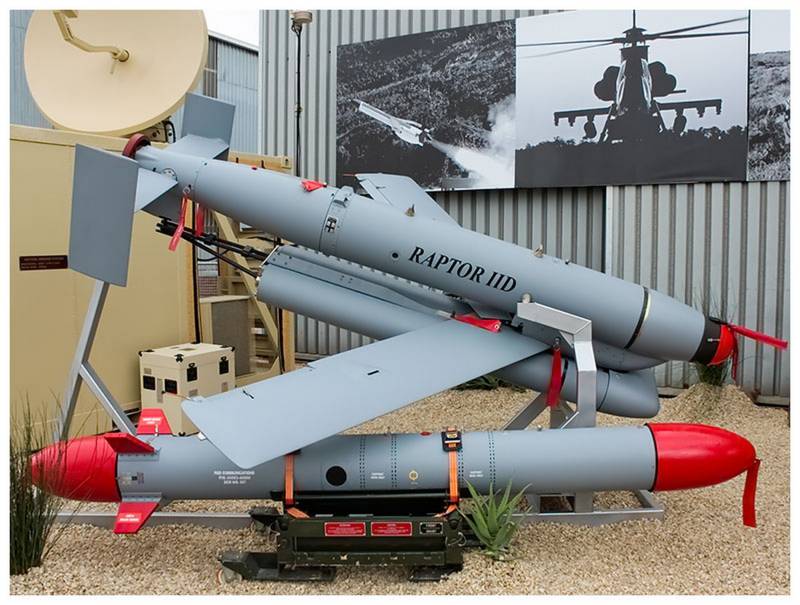
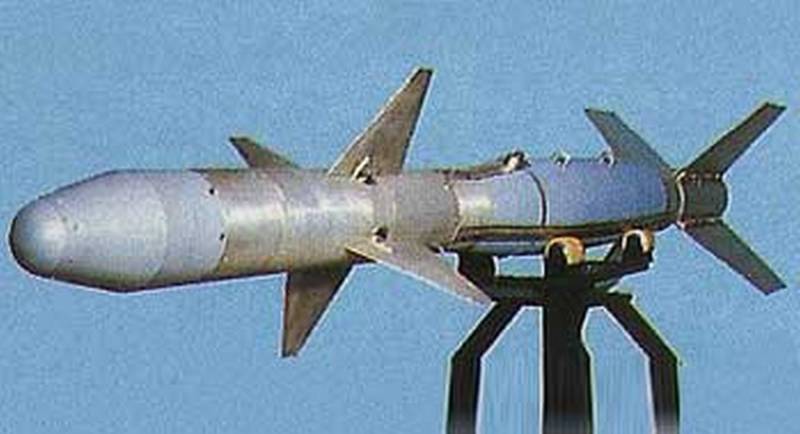
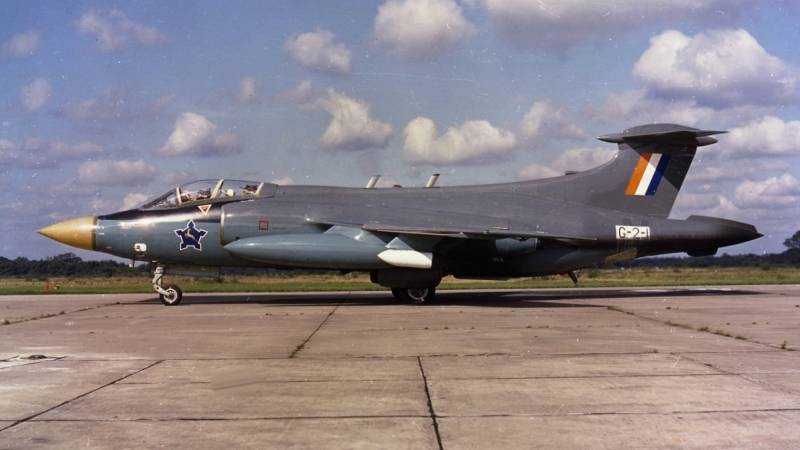
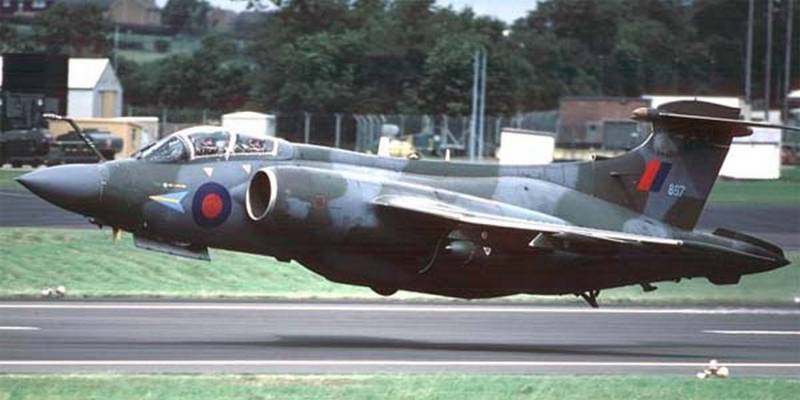
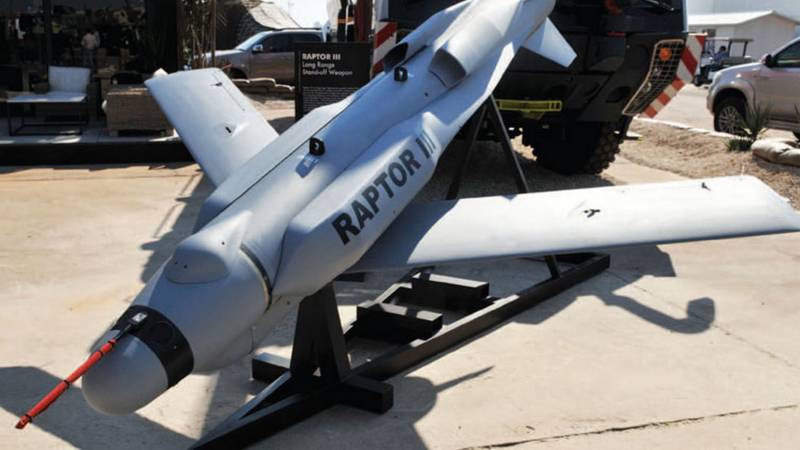
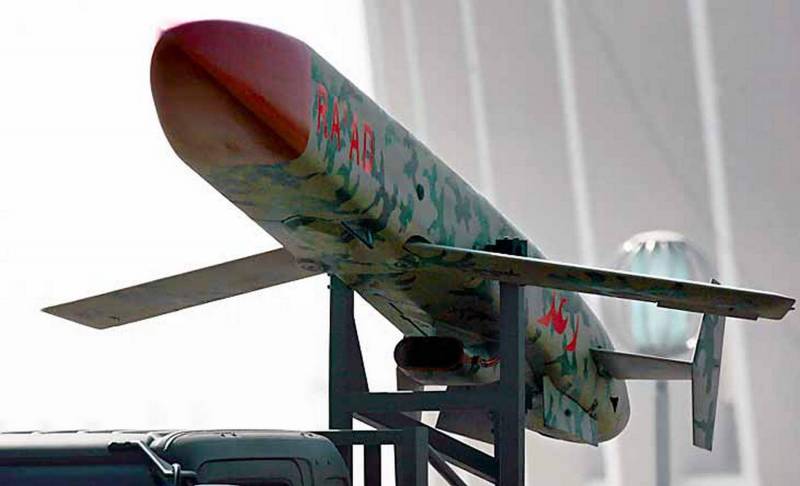
Information